It came from the same womb as the Porsche 959, was able to hustle a Honda NSX and, to 50km/h, was quicker than a McLaren F1. Meet the 1994 Audi RS2 Avant – the angriest Audi 80 wagon ever and a worthy inclusion to MOTOR’s informal Hall of Fame.
For readers unfamiliar, the RS2 is the original RS Audi. The story goes, Audi was impressed by the success of the S2 coupe and original S4 sedan from 1991. Quattro GmbH, so named after Audi’s extraordinary rally exploits of the early ’80s, was more a vehicle accessory producer than a performance division. But it was decided the brand would expand and the corporate punch spiked – and so, in 1994, the RS, or RennSport (Racing Sport) sub-brand was born.

Later that year, its first car was the RS2 but, as history-savvy readers will be familiar, Porsche played as much a role in its birth as quattro did.
Look closely at the photos. Mirrors, front indicators and foglights look vaguely familiar? They’re all pinched off a 993 911. Those 17-inch wheels? 968 Clubsport. Wrapped around them, the 968’s tyres and, underneath, the Porsche’s big 322mm Brembo brakes.
Borrowing more philosophically from Porsche, the RS2 didn’t mess about, either. It was fast – 0-100km/h in 5.4 seconds – and back in 1994, the five-second bracket was equivalent to today’s fours (an original NSX did 5.1). But the RS2 would max out at 262km/h at 6600rpm, though according to lore, the engineers said 275km/h was possible if you unplugged the limiter.
Like Stuttgart’s products, the RS2 wasn’t exactly cheap, either. In the UK, at launch, it cost £39,500. Later you’ll read about the failed plan to bring the RS2 to Australia for $145,000. In today’s money, adjusted for inflation, that’s more like $240K. Add on modern-day taxes, and you’re staring down the barrel of around $300,000. So for a first product from a new brand, you needed the folding stuff, and a lot of it.

It had 20 valves but, of course, four valves per cylinder – and five of those, fed a not insignificant 1.4 bar of boost, or 20psi, by a KKK turbocharger that was 20 per cent larger than that of the Audi S2. While Porsche was at it, the five-cylinder mill copped bigger injectors and intercooler, angrier cams and revised intake and exhaust systems, as well as a retuned Bosch ECU.
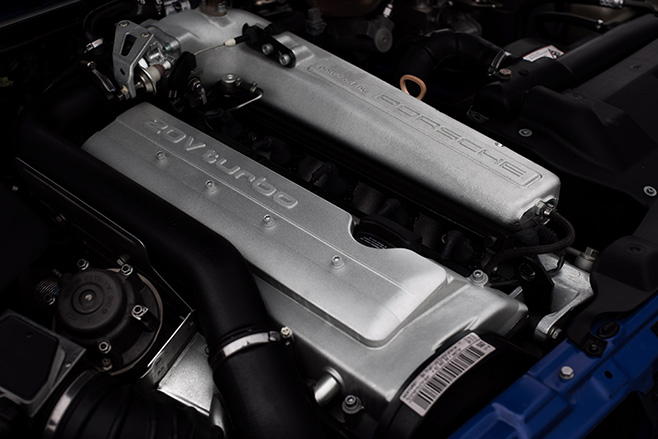
Built at VW’s Salzgitter plant, every RS2 engine was tested at full load for 90 minutes to guarantee full power. The cam cover read “powered by PORSCHE”. Porsche also fitted branded badges to its front and back, while the brake calipers, too, boasted “Porsche”.
Meanwhile, a six-speed manual sent power to every wheel via a Torsen centre diff, able to send 75 per cent of thrust to one axle as needed. The RS2 even came with a manually-activated locking rear diff, although this function was disabled above 24km/h (15mph).
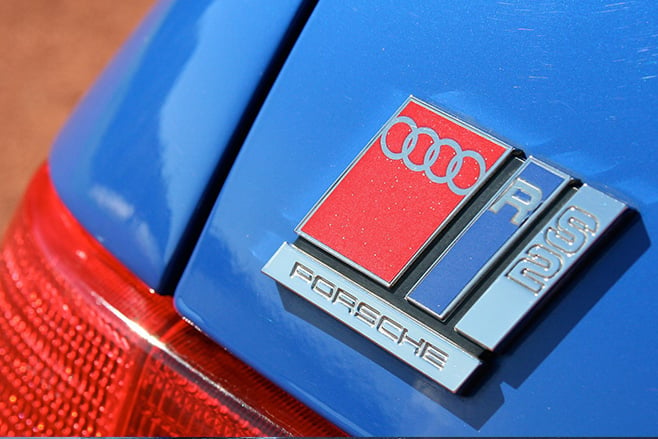
The end result was 232kW at 6500rpm and peak torque of 410Nm at 3000rpm, though 400Nm was available from 2400-4900rpm. Again, these were supercar outputs in 1994 and enough to shift the 1595kg RS2 to 100km/h in 5.4 seconds. Twenty one years ago, not many cars could catch it. And 0-50km/h in just 1.5 seconds was explosive at the time – indeed, famously quicker than the mighty McLaren F1.
You couldn’t put skis, a dog and three kids in the McLaren, blast down the autobahn then fang up an unsealed alpine pass. (Then again, maybe you could.)
A trade-off for this acceleration was, as we found recently, turbo lag. Lots of it.
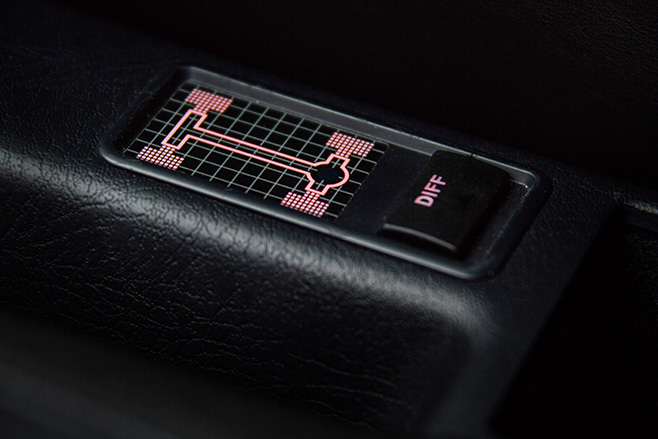
Presented with an immaculate RS2, and its keys, in Germany recently, after driving modern cars you immediately notice the tinny, thin doors as you climb into the RS2’s not-quite-classic, not-quite-modern interior.
Common to ’90s interiors, black is the all-prevailing colour, broken up by white tacho and speedo, blue stitching and little touches like a carbon fibre dash insert with a blue weave through it. And the seats, oh yes, bright blue Alcantara not even a blind man could miss.
They are quite nice to sit in, however. Made by Recaro especially for the RS2, they’re softly padded and comfortable.

Crank the key clockwise and the slow-tempo starter motor fires the engine up. As you set off, the RS2 shows its age again in the clutch, gearshift and steering, which all feel from a different era. It’s a 21-year-old car, after all.
The RS2 rides well on springs which must be pretty soft. Porsche kept the S2’s cushy springs but fitted stiffer shocks and thick swaybars. Pitch the RS2 into your first corner and it feels like those 911 mirrors are going to grind off on the road. There’s a bit of body roll, yes.
We didn’t get the chance to test the RS2’s change-of-direction but from our brief drive, it’s probably not a bad thing we didn’t. We mightn’t have survived to tell you what it’s like, such is the RS2’s fairly springy suspension.
The steering is very light, slow in rack and feels sloppy and loose rather than tight and direct. With the pillowy suspension, aggressive steering inputs can upset the RS2.
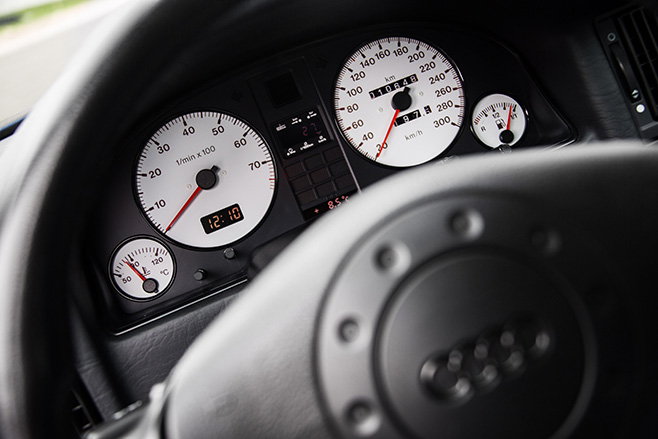
Full throttle from 1500rpm is all nothing, nothing, nothing, then, at 3500rpm, wham! The bonnet lifts as the RS2 squats hard into its rear suspension, blasting anyone behind with five angry, burbling cylinders. It sounds awesome.
It takes you by surprise as the turbo comes on boost, almost violently, and hauls strongly to its 7200rpm rev-cut.
We drove the RS2 in the wet and first gear, full throttle, traction was immense. It’s just as well every one of the RS2’s tyres gets a share of the 232kW/410Nm, because in the wet, as the RS2 comes on boost, things would be seriously interesting with one driven axle.
The RS2’s cracking five-cylinder exhaust note is distinct – you need to hear it to know it. And there’s no doubting this thing has some oomph, even by today’s standards.
Audi originally planned to produce 2200 RS2s but it was so popular, it built a total of 2891 cars – 182 in right-hand-drive, mostly for the UK, but a handful reached New Zealand and South Africa. But not Australia, sadly.
Audi importer Inchcape plotted to bring 25 right-hand-drive RS2s to Australia, at $145,000 each, but the plan fell over. As far as MOTOR knows, there is just one RS2 in Australia, imported from New Zealand and registered in Victoria. It was last for sale in 2012.
As for the RS2’s balance of oversteer and understeer, MOTOR sadly can’t comment as our drive was really a brief few laps of a soaking wet German industrial estate.
But it was enough to get an appreciation of the machine – a highly likeable, McLaren F1-frightening 1990s supercar dressed up, hilariously, as an Audi 80 wagon. And to truly realise that cars like the RS4 and RS6 really do get it from their parents.
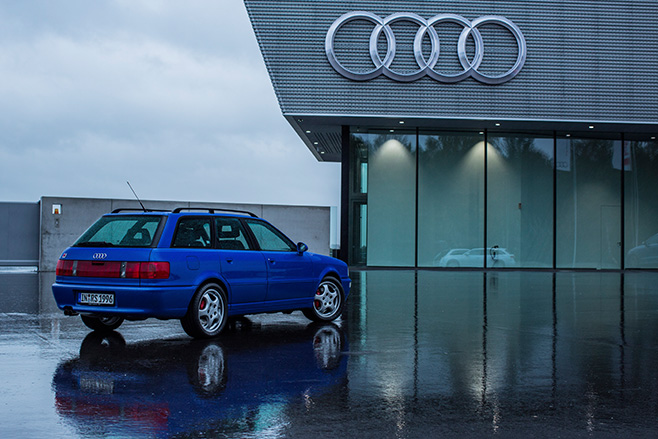
FAST FACTS 1994 Audi RS2 Avant BODY: 5-door, 5-seat wagon DRIVE: all-wheel ENGINE: 2226cc inline-5cyl, DOHC, 20v, turbocharger BORE/STROKE: 81.0 x 86.4mm COMPRESSION: 9.0:1 POWER: 232kW @ 6500rpm TORQUE: 410Nm @ 3000rpm WEIGHT: 1595kg POWER-TO- WEIGHT: 146kW/tonne TRANSMISSION: 6-speed manual SUSPENSION: struts, coil springs, anti-roll bar (f); multi-links, coil springs, anti-roll bar (r) L/W/h: 4510/1695/1386mm WHEELBASE: 2597mm TRACKS: 1448/1471mm (f/r) BRAKES: 304mm ventilated discs, 4-piston calipers




